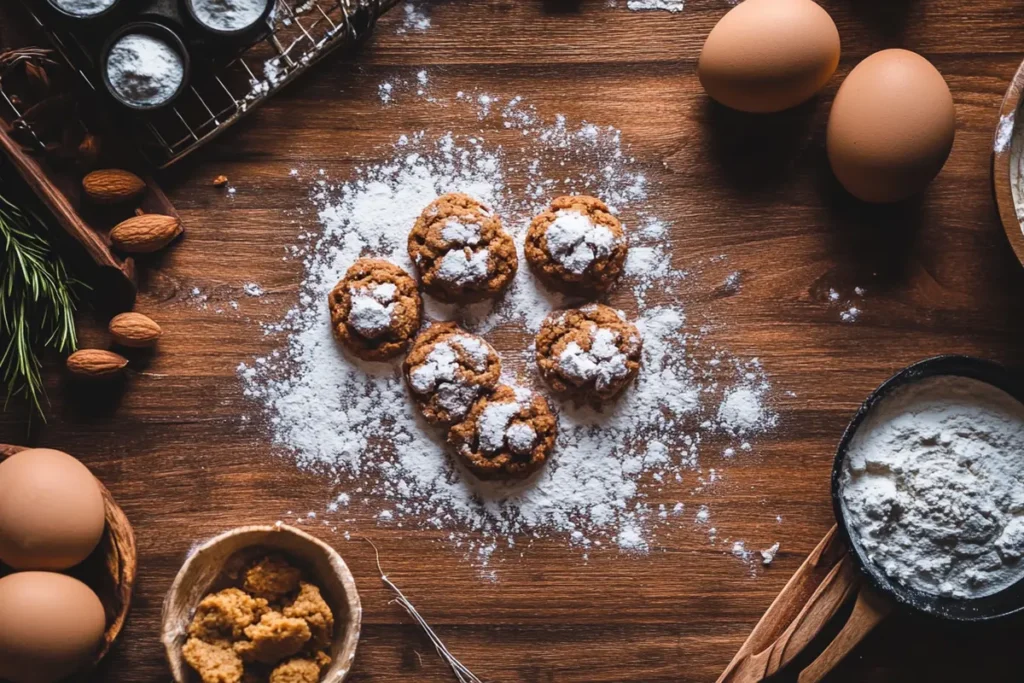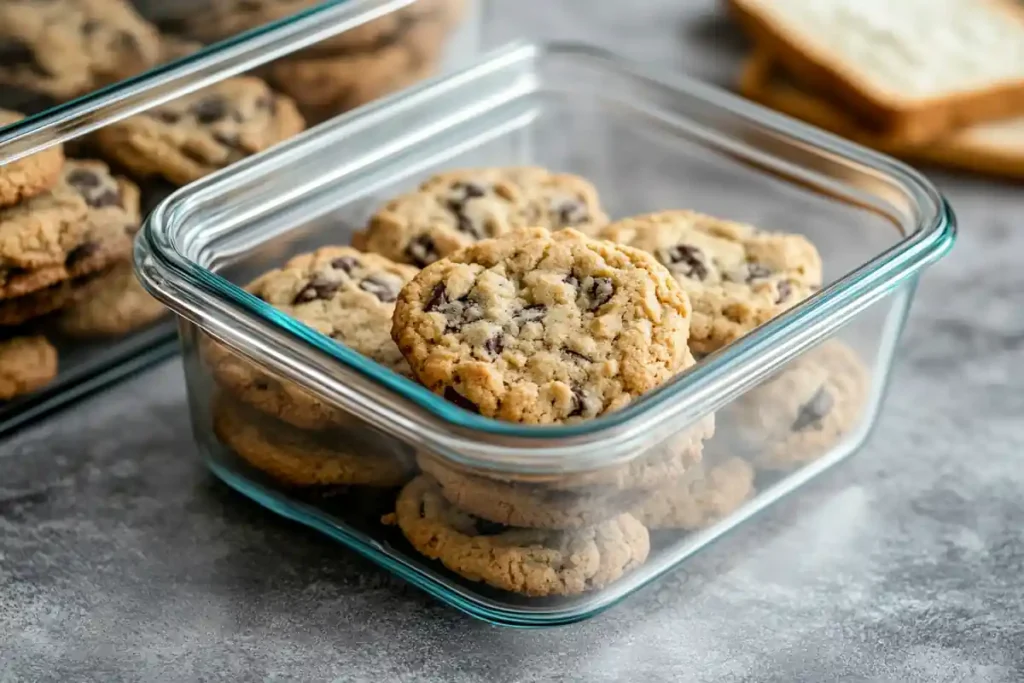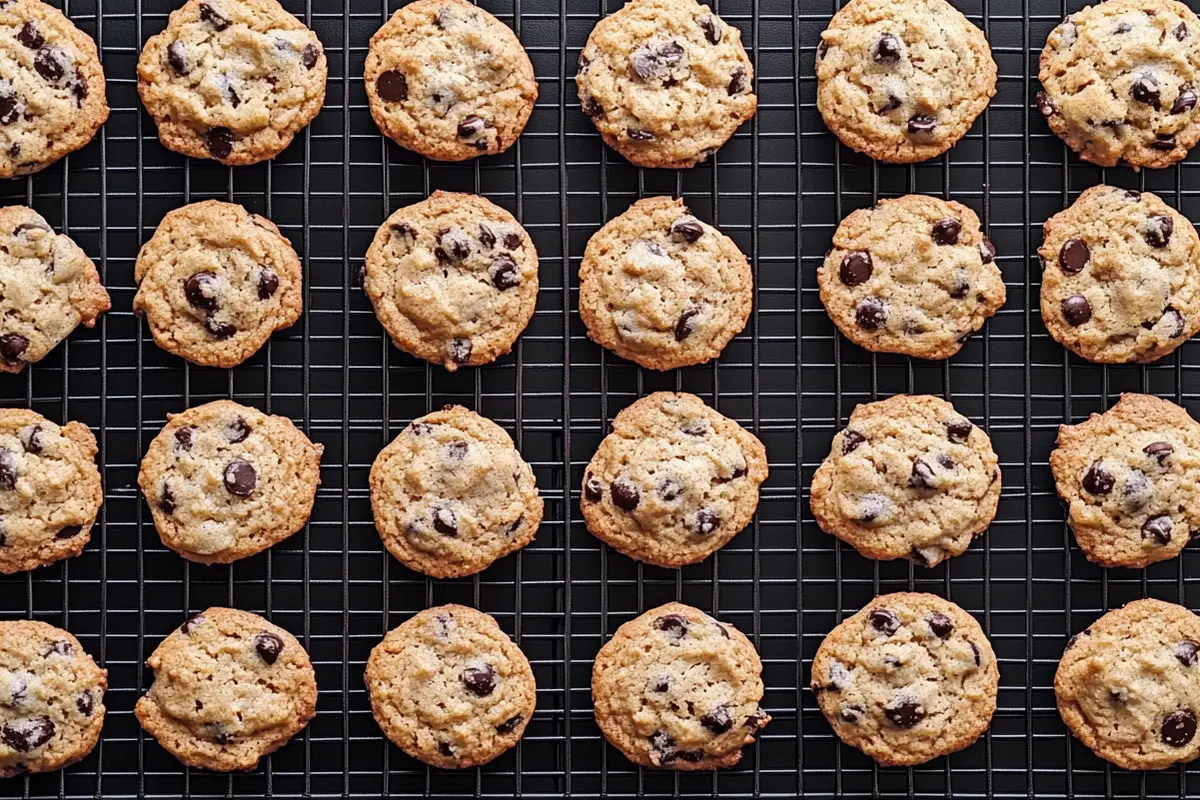Discover the essential methods, tips, and ingredient tricks to achieve deliciously soft, chewy cookies that everyone will adore.
Estimated reading time: 10 minutes
Table of Contents
What is the secret to making cookies soft and chewy? Many bakers ask this question, yet the answer often involves balancing moisture, ingredients, and techniques. Albeit it sounds complex, achieving that perfect chewiness is simpler once you understand the science behind cookie texture and flavor.
In the second paragraph, let us consider the key elements that influence texture. What is the secret to making cookies soft and chewy? Chiefly, it involves using high-moisture ingredients, adjusting baking temperatures, and monitoring baking times. Another factor involves choosing the right type of sugar. For more ingredient insights, visit the U.S. Dairy website, where they discuss butter’s moisture content. Equally, understanding sugar’s role is crucial. Comparatively, brown sugar adds more moisture than white sugar. For more details, check Sugar.org for information on sweetener properties. Additionally, consider the impact of chilling cookie dough. Certainly, this step is often overlooked but yields excellent results.
In the third paragraph, before diving deeper into the specifics, it is beneficial to confirm basic food safety and ingredient handling. Properly storing eggs and butter ensures consistent texture and flavor. For additional guidance on handling perishable ingredients, see FoodSafety.gov to ensure your baking environment remains hygienic and safe. Afterwards, we will examine each component that plays a role in creating your ideal soft, chewy cookie. Undoubtedly, mastering these fundamentals helps you bake cookies that exceed all expectations.
In the upcoming section, we will explore the science behind soft and chewy cookies in greater detail. Instead of guessing, we will analyze how moisture, fats, proteins, and sugars work together to form that crave-worthy chewiness. Meanwhile, remember that even small tweaks—like adding an extra egg yolk or reducing baking time—can remarkably transform the final product.
The Science Behind Soft and Chewy Cookies
What is the secret to making cookies soft and chewy? Fundamentally, it revolves around moisture retention and balanced structure. Initially, consider that moisture is key. Butter, eggs, and sugars contribute water molecules to the dough. Because these molecules evaporate during baking, controlling them ensures chewy textures. Basically, more moisture results in softer cookies.
Concurrently, fats play a central role. Butter adds flavor and moisture. Comparatively, using softened butter helps incorporate air, leading to fluffier cookies. Conversely, using melted butter can yield denser, chewier cookies. Formerly, bakers assumed butter’s only purpose was flavor, but now we know better. Additionally, sugar type affects moisture retention. Brown sugar, because of its molasses content, holds onto water, ensuring a tender crumb. Conversely, white sugar produces crisp edges.
Moreover, flour’s protein content influences cookie texture. Generally, all-purpose flour strikes a balance between chewiness and crispness. Lower-protein flours, e.g., cake flour, yield delicate cookies. Another factor is gluten development. Overmixing creates tough cookies. Thus, mixing gently is crucial. Also, eggs provide structure and fat. The yolks, specifically, lend richness and chew. Before baking, consider how each element affects your final result.
Choosing the Right Ingredients
Moving to the next part, let’s delve into ingredient selection. What is the secret to making cookies soft and chewy? Another key insight is choosing flours with moderate protein levels. All-purpose flour is a standard choice. However, substituting a portion with cake flour can soften cookies. Correspondingly, whole wheat flour adds complexity but may dry the cookie. Therefore, balance it with added moisture.
Regarding fats, butter is a top choice. Softened butter, not melted or icy-cold, creams well with sugar. This step traps air for a lighter texture. Alternatively, using shortening yields puffier, softer cookies because it has no water content. Nevertheless, butter often wins due to flavor. Conversely, oils produce flatter cookies. Ultimately, test different fats until you find what suits your taste.
Sugar type matters. Brown sugar retains moisture, resulting in chewy cookies. White sugar creates crisp edges. Combining them, e.g., half brown and half white, achieves a balanced texture. If you desire even more chew, try adding a tablespoon of molasses or honey. Besides providing moisture, molasses deepens flavor. Furthermore, consider liquid sweeteners like maple syrup. They add complexity and softness.
Eggs matter because they add moisture, fat, and protein. Using just yolks can increase chewiness. Adding a small amount of dairy—milk, cream, or yogurt—improves tenderness. Moreover, flavor add-ins like chocolate chips, nuts, and dried fruits affect texture. Chocolate chips melt slightly, adding moisture. Nuts add crunch but can limit chewiness. Therefore, balance your mix-ins accordingly.
Advancing to the next topic, now that we’ve analyzed ingredients, let’s discuss dough preparation. Paying attention to how you mix these ingredients is as important as the choice itself.
Perfecting the Dough Preparation

In the next installment, proper dough preparation ensures chewy cookies. Initially, cream butter and sugar well, but not excessively. Creaming incorporates air, giving a slight lift. Concurrently, under-creaming might result in dense cookies. But over-creaming can make cookies spread too much. Hence, find a moderate path.
When adding dry ingredients, do so gradually and gently. Stirring just until combined prevents overdeveloping gluten. Also, fold in mix-ins last to maintain a tender dough. Afterward, consider chilling the dough. Chilling firms the fat, reduces spreading, and improves flavor. Typically, 30 minutes to overnight chilling helps. Occasionally, even a quick 15-minute chill enhances texture.
If your dough seems dry, add a teaspoon of milk. If it’s too wet, add a tablespoon of flour. Adjusting consistency ensures cookies that bake evenly. In the next division, we will discuss shaping and portioning cookies. This step influences thickness, spread, and texture.
Shaping and Portioning Cookies
Transitioning to the subsequent portion, shaping cookies impacts their final texture. Identically sized cookies ensure even baking. Use a cookie scoop for uniformity. This results in cookies that bake identically, ensuring consistent softness. Another method is rolling dough into balls and flattening slightly. Flattening leads to thinner cookies with crisp edges but soft centers. Conversely, leaving them in taller mounds yields thicker, chewier centers.
Besides size, spacing cookies two inches apart prevents merging. Afterwards, consider using parchment paper for easy removal. In the next phase, we will focus on the baking techniques that bring everything together.
Baking Techniques for Soft and Chewy Cookies

In the ensuing segment, controlling oven temperature and baking time is crucial. Generally, 350°F is a sweet spot. Baking at a slightly lower temperature (e.g., 325°F) can help maintain softness by allowing cookies to bake more gently. Conversely, a higher temperature promotes browning and crispiness. Thus, adjust to your preference.
Shortly before cookies look fully done, remove them from the oven. Cookies continue cooking on the hot baking sheet. Underbaking by a minute or two ensures a soft, chewy center. Fourthly, remember that light-colored baking sheets reflect heat, preventing excess browning. Meanwhile, parchment paper ensures even spreading and simple cleanup.
At high altitude, cookies dry faster. Consequently, add a bit more moisture or reduce baking time. In the next subsection, we will learn how cooling and storage methods preserve your cookies’ softness.
Cooling and Storage for Retaining Softness
Proceeding to the next chapter, proper cooling prevents cookies from over-drying. Let cookies rest on the baking sheet for a few minutes. This allows carryover cooking without turning them crisp. Then, transfer them to a wire rack to prevent sogginess at the bottom. Certainly, controlling the cooling process helps maintain chewiness.
To store cookies, use airtight containers to lock in moisture. Add a slice of bread to the container. The bread’s moisture transfers to the cookies, keeping them soft. Alternatively, place a damp paper towel in a sealed bag. Also, freeze extra cookies in an airtight container. Reheat them briefly to revive softness. In the succeeding section, we will tackle common mistakes and how to fix them.

Common Mistakes and How to Fix Them
In the following segment, overbaking is a chief mistake. When cookies turn crisp and dry, bake them for less time. Another common error is using too much flour. Spoon and level your flour to avoid a dry dough. Also, not creaming butter and sugar correctly leads to texture issues. Similarly, skipping the chill time might cause excessive spread and dryness. Besides these pitfalls, improper storage accelerates cookie hardening.
In the next division, we will propose some flavor variations and recipe ideas. Each variation highlights different methods to achieve chewiness.
Flavor Variations and Recipe Ideas for Soft and Chewy Cookies
On to the following discussion, start with classic chocolate chip cookies. Use more brown sugar than white. Add an extra egg yolk. These adjustments boost moisture and chewiness. Another variation: brown sugar molasses cookies. Molasses adds depth and stickiness. Basically, molasses makes cookies stay soft longer.
Peanut butter cookies often turn crumbly. However, add a tablespoon of milk or honey for moisture. Similarly, oatmeal raisin cookies benefit from a rest period. Oats absorb liquid, resulting in a tender chew. White chocolate macadamia nut cookies can be soft if you reduce baking time and use more brown sugar. Overall, experiment with flavor and texture combinations.
Heading into the subsequent area, let’s consider healthier options. Even with substitutions, it’s possible to maintain that soft, chewy texture.
Healthier Options Without Losing Softness
In the next subsection, whole wheat flour adds fiber and complexity. Lest the cookies turn dry, add an extra egg yolk or a tablespoon of yogurt. Similarly, reduced sugar might compromise chewiness. Hence, use natural sweeteners like honey or date syrup. They add moisture and flavor.
For vegan cookies, replace butter with vegan margarine or coconut oil. Use flax “eggs” (ground flax + water) for binding. Although these changes differ from traditional recipes, you can still achieve chewiness by adjusting moisture. Moving forward to the next topic, we’ll troubleshoot specific texture issues in more depth.
Troubleshooting Specific Texture Issues

Transitioning into the following chapter, if cookies spread too much, chill the dough longer. Alternatively, slightly increase the flour amount. If cookies are too thick and do not spread, flatten the dough balls before baking. Comparatively, if cookies turn out tough, you likely overmixed. Use gentle mixing and choose lower-protein flour. If cookies taste bland or flat, add brown sugar, molasses, or more vanilla extract.
In the next installment, we will answer frequently asked questions. These queries cover common baking challenges and solutions for preserving softness.
Conclusion
In the succeeding section, it’s clear that What is the secret to making cookies soft and chewy? lies in striking the perfect balance. Identically, thoughtful ingredient selection, proper mixing, precise baking, and careful storage all contribute. Soft, chewy cookies come from moisture-rich ingredients, gentle handling, and slightly underbaking. Afterward, practice and observation help refine your technique.
Detailed FAQ Section
1. What makes cookies chewy vs. crunchy?
Soft, chewy cookies rely on moisture retention, slightly underbaking, and using ingredients like brown sugar. Crunchy cookies bake longer, use more white sugar, or have less moisture.
2. Do I need to chill cookie dough to get soft cookies?
Chilling dough helps solidify fat, reducing spread and promoting tender centers. Although optional, it often improves texture, making cookies chewier.
3. How do I keep my cookies soft for days?
Store cookies in airtight containers with a slice of bread or a slightly damp paper towel. Freezing cookies and reheating them also revives softness.
4. Should I use brown sugar or white sugar for chewy cookies?
Brown sugar contains molasses, which adds moisture. This moisture creates a soft, chewy texture. Using mostly brown sugar increases chewiness.

